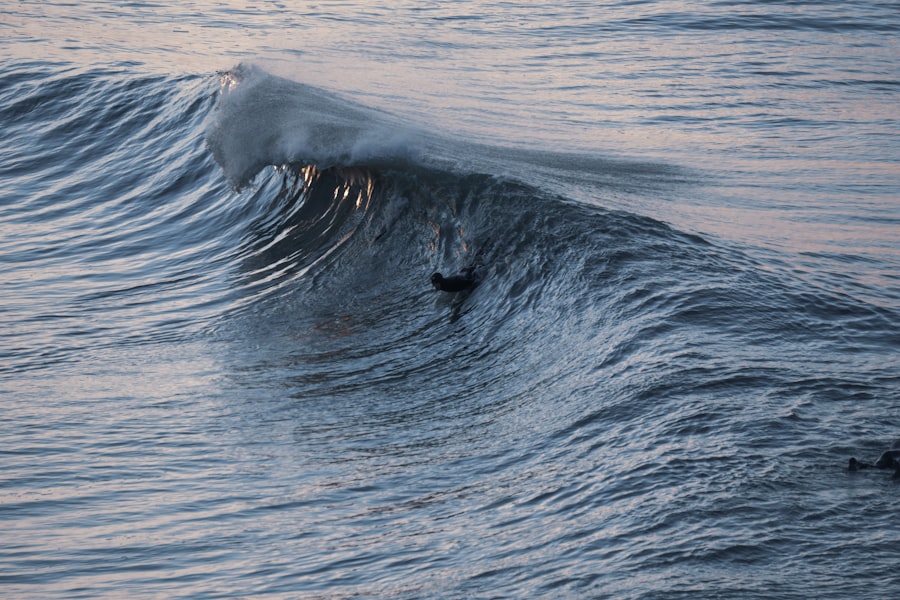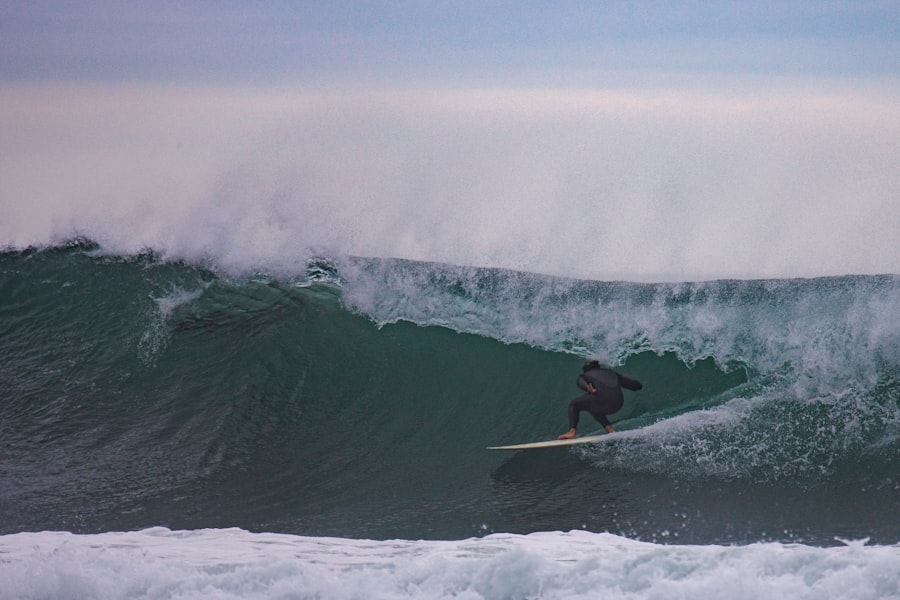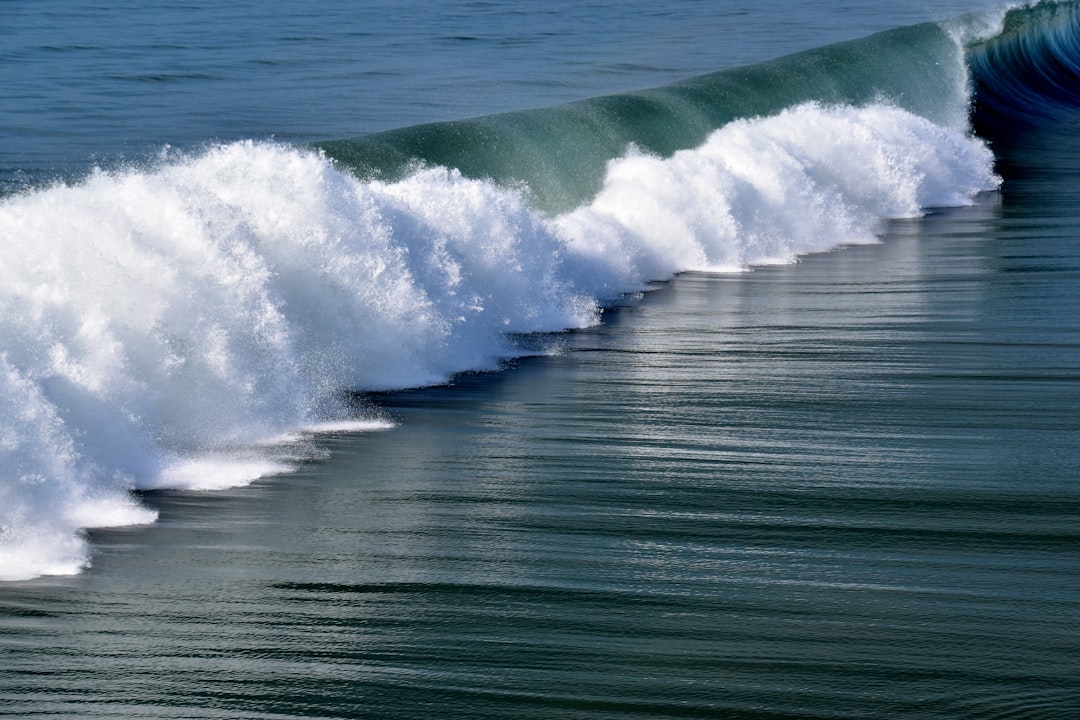The Drake Passage, a body of water located between the southern tip of South America and Antarctica, is notorious for its tumultuous seas and unpredictable weather patterns.
One of the most crucial aspects of navigating the Drake Passage is understanding wave height, which can vary dramatically due to a multitude of factors.
The wave heights in this region can reach staggering levels, making it essential for sailors, researchers, and environmentalists to monitor and comprehend these fluctuations. Wave height in the Drake Passage is not merely a statistic; it serves as an indicator of the ocean’s mood and can have profound implications for both marine life and human activities. The passage is often characterized by its rough seas, which can pose challenges for vessels traversing the area.
Understanding wave height is vital for ensuring safety at sea, as well as for predicting weather patterns and their potential impacts on the surrounding ecosystems. As such, the study of wave height in the Drake Passage is an ongoing endeavor that combines meteorology, oceanography, and maritime navigation.
Key Takeaways
- Drake Passage is known for its notoriously high wave heights, making it a challenging area for maritime activities.
- Understanding wave height in the Drake Passage is crucial for safe navigation and marine operations in the region.
- Real-time updates on current wave heights in the Drake Passage are essential for maritime safety and decision-making.
- Factors such as wind speed, ocean currents, and topography influence wave height in the Drake Passage.
- High wave heights in the Drake Passage can have significant impacts on marine transportation, research expeditions, and wildlife in the region.
Understanding the significance of wave height in the Drake Passage
Wave height is a critical parameter in oceanography that reflects the energy and dynamics of the sea. In the Drake Passage, where the confluence of various ocean currents occurs, wave height can serve as a barometer for understanding broader climatic conditions. High wave heights can indicate strong winds and turbulent weather, which can have cascading effects on marine ecosystems and human activities alike.
For sailors and researchers alike, knowing the expected wave heights can mean the difference between a safe journey and a perilous one. Moreover, wave height is not just a concern for those at sea; it also has implications for coastal communities and marine wildlife. The energy generated by high waves can lead to coastal erosion, affecting habitats and human settlements along the shores.
Additionally, marine species that rely on stable conditions for breeding and feeding may be adversely affected by extreme wave events. Thus, understanding wave height in the Drake Passage is essential not only for navigation but also for environmental conservation efforts.
Real-time updates on current wave heights in the Drake Passage

In today’s digital age, access to real-time data has transformed how mariners and researchers approach navigation and study in challenging environments like the Drake Passage. Various platforms provide up-to-the-minute updates on wave heights, allowing those in the region to make informed decisions based on current conditions. These updates are crucial for ensuring safety at sea, as they enable vessels to adjust their routes or schedules in response to changing weather patterns.
Real-time data on wave heights is typically gathered from a combination of satellite observations, buoys, and weather stations strategically placed throughout the passage. This information is then disseminated through various channels, including maritime apps, websites, and even direct alerts to ships in transit. By leveraging technology to monitor wave heights continuously, stakeholders can better prepare for the unpredictable nature of the Drake Passage, ultimately enhancing safety and operational efficiency.
Factors influencing wave height in the Drake Passage
| Factor | Description |
|---|---|
| Wind speed | The higher the wind speed, the larger the waves in the Drake Passage. |
| Fetch | The distance over which the wind blows without obstruction, affecting wave height. |
| Water depth | Shallower water depth can lead to larger waves due to interaction with the seabed. |
| Storms | Intense storms can significantly increase wave height in the passage. |
| Currents | Strong ocean currents can interact with wind to produce larger waves. |
Several factors contribute to the variability of wave height in the Drake Passage, making it one of the most dynamic marine environments on Earth. Wind speed and direction are primary influencers; strong winds can generate larger waves, while shifts in wind patterns can lead to sudden changes in wave conditions. The geography of the passage itself also plays a role; its narrow width funnels ocean currents, intensifying wave action as water is forced through this constricted space.
Additionally, seasonal variations can significantly impact wave height. During certain times of the year, storms are more frequent and intense, leading to higher average wave heights. The interplay between ocean currents—such as the Antarctic Circumpolar Current—and atmospheric conditions further complicates predictions about wave behavior.
Understanding these factors is essential for anyone operating in or studying the Drake Passage, as they provide insight into when conditions may become particularly hazardous.
Impacts of high wave heights on marine and human activities in the Drake Passage
High wave heights in the Drake Passage can have far-reaching consequences for both marine ecosystems and human activities. For vessels navigating these waters, extreme waves can pose significant risks, including capsizing or structural damage to ships. The unpredictability of wave conditions necessitates careful planning and real-time monitoring to ensure safe passage through this treacherous region.
On a broader scale, high waves can disrupt marine life by altering habitats and affecting feeding patterns. Species that inhabit these waters may struggle to adapt to sudden changes in their environment caused by extreme weather events. Furthermore, high waves can impact fishing activities by making it difficult or dangerous for fishermen to operate their vessels safely.
As such, understanding and monitoring wave heights is crucial not only for navigation but also for preserving marine biodiversity in this unique ecosystem.
Comparison of current wave heights with historical data in the Drake Passage

Analyzing current wave heights in relation to historical data provides valuable context for understanding trends and anomalies in the Drake Passage. Historical records reveal patterns that can help predict future conditions and assess how climate change may be influencing wave behavior over time. By comparing current measurements with past data, researchers can identify whether recent events are part of a long-term trend or if they represent unusual occurrences.
This comparative analysis is essential for developing effective strategies for managing maritime activities and protecting marine ecosystems. For instance, if current wave heights are significantly higher than historical averages, it may indicate an increase in storm frequency or intensity linked to climate change. Such insights can inform policy decisions regarding shipping routes, fishing regulations, and conservation efforts aimed at safeguarding vulnerable species within the passage.
Technology and methods used to measure wave height in the Drake Passage
The measurement of wave height in the Drake Passage relies on advanced technology and methodologies that have evolved significantly over recent years. Traditional methods involved using buoys equipped with sensors that could record wave heights at specific locations. However, advancements in satellite technology have revolutionized data collection by providing comprehensive coverage of vast ocean areas.
Modern satellites equipped with radar altimeters can measure wave heights from space with remarkable accuracy. These measurements are complemented by data from buoys and coastal weather stations that provide localized information about sea conditions. The integration of these various data sources allows for a more complete understanding of wave dynamics in the Drake Passage, enabling researchers and mariners to make informed decisions based on real-time information.
Safety precautions and advisories related to high wave heights in the Drake Passage
Given the unpredictable nature of wave heights in the Drake Passage, safety precautions are paramount for anyone operating in these waters. Mariners are advised to stay informed about current conditions through reliable sources and to heed any advisories issued by maritime authorities. These advisories often include recommendations for route adjustments or delays based on anticipated weather patterns.
In addition to monitoring real-time data, vessels should be equipped with safety gear and emergency supplies to prepare for potential emergencies caused by high waves. Training crew members on how to respond effectively during rough sea conditions is also crucial for ensuring safety at sea. By taking these precautions seriously, mariners can mitigate risks associated with navigating one of the world’s most challenging maritime environments.
Expert opinions and forecasts on future wave heights in the Drake Passage
Experts in oceanography and meteorology continually analyze data from various sources to forecast future wave heights in the Drake Passage. These forecasts are based on a combination of historical trends, current weather patterns, and advanced modeling techniques that simulate ocean behavior under different conditions. By synthesizing this information, experts can provide valuable insights into what mariners might expect in terms of wave activity over both short- and long-term periods.
Forecasts play a critical role in maritime planning and decision-making processes. For instance, if models predict an increase in storm activity leading to higher average wave heights over an upcoming season, shipping companies may choose to adjust their schedules or routes accordingly. Similarly, researchers studying marine ecosystems can use these forecasts to anticipate how changing conditions might affect local wildlife populations.
Case studies of notable wave events in the Drake Passage
Throughout history, there have been several notable events characterized by extreme wave heights in the Drake Passage that serve as case studies for understanding this unique marine environment. One such event occurred during a powerful storm that struck the region in 2004, generating waves that reached unprecedented heights. This storm not only posed significant challenges for vessels navigating through the passage but also had lasting impacts on local ecosystems.
Another case study involves a research expedition that encountered unexpectedly high waves while studying marine life in the area. The crew’s ability to adapt quickly to changing conditions underscored the importance of real-time data monitoring and effective communication among team members during emergencies at sea. These case studies highlight both the dangers posed by high waves in the Drake Passage and the resilience required by those who operate within this challenging environment.
Conclusion and takeaways for monitoring wave height in the Drake Passage
Monitoring wave height in the Drake Passage is essential for ensuring safety at sea and protecting marine ecosystems from potential harm caused by extreme weather events. As technology continues to advance, access to real-time data will only improve, allowing mariners and researchers alike to make informed decisions based on current conditions. Understanding the factors influencing wave height—such as wind patterns, ocean currents, and seasonal variations—will remain crucial for navigating this dynamic marine environment.
Ultimately, collaboration among scientists, maritime authorities, and industry stakeholders will be key to effectively managing activities within the Drake Passage while safeguarding its unique ecological characteristics. By prioritizing safety measures and staying informed about changing conditions through reliable data sources, those who traverse these waters can better navigate its challenges while contributing to ongoing efforts aimed at preserving this vital marine ecosystem for future generations.
Today, the Drake Passage is experiencing significant wave activity, with wave heights reaching impressive levels. For those interested in real-time updates and detailed information about the current conditions in this notoriously turbulent stretch of water, you can explore a related article that provides insights into the dynamic nature of the Drake Passage. This article offers valuable context and data on the wave patterns observed today. To learn more, visit the article on MyGeoQuest.
WATCH NOW! Drake Passage: Earth’s Deadliest Waters Revealed
FAQs
What is the Drake Passage?
The Drake Passage is the body of water between the southern tip of South America and the northern tip of the Antarctic Peninsula. It is known for its rough seas and challenging sailing conditions.
What is wave height?
Wave height is the vertical distance between the crest and the trough of a wave. It is a measure of the size of the waves in a body of water.
How is wave height measured?
Wave height is typically measured by instruments such as wave buoys, wave riders, or by visual estimation from ships or platforms. These instruments use various methods to calculate the height of waves.
What is the significance of wave height in the Drake Passage?
The Drake Passage is notorious for its high wave heights due to the strong winds and currents in the region. Monitoring wave height in the Drake Passage is important for maritime safety and for understanding the dynamics of the Southern Ocean.
Where can I find live updates on wave height in the Drake Passage today?
Live updates on wave height in the Drake Passage can be found through various sources such as oceanographic research institutions, weather monitoring websites, and maritime navigation services. These sources may provide real-time data or forecasts for wave height in the region.
